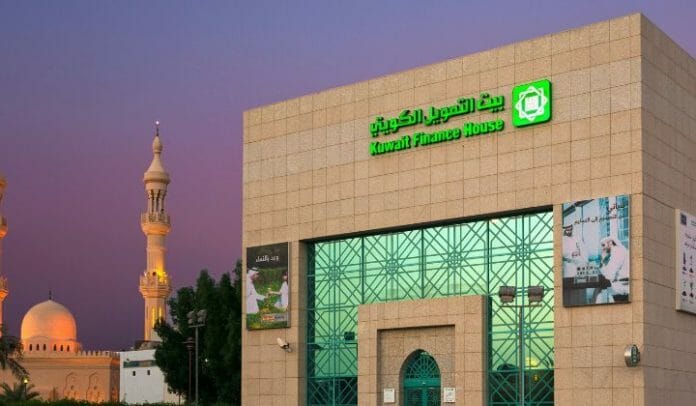The global Islamic finance industry continues its growth path with S&P Global Ratings expecting around 10% growth across the industry in 2023-2024 after expanding by a similar number in 2022 (excluding Iran). The Gulf Cooperation Council (GCC) countries–notably Saudi Arabia and Kuwait–largely fueled this performance, supported by a large, one-off acquisition in the latter it said in a report shared to business media across the region.
The report added, elsewhere, growth was either muted or held back by local currency depreciation. At the same time, sukuk issuance continued to spur the industry’s expansion despite slowing issuance volumes overall. While the Ratings agency generally expects volumes to diminish in 2023, it still believes that new issuance will exceed maturing sukuk, resulting in another positive contribution of the sukuk market to industry growth in 2023. The Islamic funds and takaful sectors are also likely to continue to expand. S&P continues to exclude Iran from its calculations due to the lack of disclosure by Iranian banks. Structural weaknesses still curb the industry’s broader geographical and market appeal, though.
It also believes that progress toward greater standardization–in part supported by the digitalization of sukuk issuance for example–could enhance the industry’s structural growth potential. At the same time, the increasing focus on sustainability-related themes by core Islamic finance players will create new opportunities for the industry. And expect the contribution of sustainability-linked sukuk to continue increasing in the next 12-24 months, albeit from a low base.
The Islamic finance industry continued to expand in 2022, with assets up by 9.4% compared with 12.2% in 2021, supported by growth in banking assets and the sukuk industry
In South-East Asia, S&P expects the Islamic banking industry to grow at around 8% over the next couple of years, despite an economic slowdown in the major markets of Malaysia and Indonesia. Robust demand for Islamic products and services and low penetration, particularly in Indonesia, support this trend. In both markets, we expect Islamic banking to continue to gain market share as growth outpaces conventional banking. Meanwhile, in Turkiye, the depreciation of the lira has been a constraint. Pressure on the Egyptian pound is also unhelpful for the industry, although the contribution of Egypt and Turkiye to the industry’s banking assets generally remains modest.
Declining sukuk issuance, but increasing stock
The report also states that sukuk issuance volumes will continue to fall in 2023, albeit at a slower pace than in 2022. S&P expects lower and more expensive global liquidity, greater complexity related to structuring sukuk, and reduced financing needs for issuers (due to fiscal surpluses from higher oil prices) in some core Islamic finance countries to deter the market. Corporates are likely to contribute to issuance volumes, particularly in countries where governments have announced transformation plans. This is the case in Saudi Arabia, where the banking system will be limited in its capacity to finance multiple projects related to Vision 2030 implementation. Issuers with high financing needs, such as those in Egypt and Turkiye, are also likely to tap the sukuk market as part of their strategy to mobilize all available resources. For example, Egypt has established a $5 billion sukuk program and issued its first sukuk in early 2023 for a total of $1.5 billion.
S&P said it understands that this attracted significant investor interest, with more than $6 billion in demand and a 59% allocation to investors from the Middle East and North Africa. The profit rate of the three-year sukuk was set at 10.875%, which at the time was broadly in line with the yield on Egypt’s conventional bond with a similar maturity date of 2026. Overall, the volume of new issuances is believed will continue to exceed maturing sukuk.
Takaful and fund industries still play their role
Despite their small contribution to the industry, takaful, and fund sectors continue to grow. The agency expects takaful to expand at an annual rate of around 10%, supported by continued nominal GDP growth, the expansion of infrastructure investment and medical insurance covers, and some inflation-related tariff adjustments. Fund growth will hinge on the performance of the capital markets, given its structure–around one-quarter of equity funds and another 60%
money market or sukuk funds.
Overall, a growth rate of about 10% is achievable for the industry over the next two years. Iran is excluded from the calculations due to the lack of disclosure and volatility of the country’s exchange rate.
The Industry Remains Highly Concentrated
S&P said it sees the Islamic finance industry as a collection of local industries rather than a truly globalized sector. In 2022, Saudi Arabia and Kuwait drove most of the growth in banking assets. Similarly, Malaysia and GCC countries accounted for a large portion of the sukuk market during the same period. Interest in tapping the sukuk market from players beyond the industry’s original boundaries seems to be limited to countries in need to open all available financing options.
The industry is therefore looking at ways to enhance its competitiveness and appeal to distinguish itself from the conventional fixed-income market. Streamlining products and processes to make them more appealing to new issuers is one of these methods. The Ratings agency believes that measures taken by stakeholders–particularly standard setters–and increased digitalization could also help. On the other hand, we note the potentially conflicting views of Sharia scholars, who favor more equity-like characteristics for sukuk, and investors that prefer more debt-like features. It sees this as a factor that could disrupt the market.









